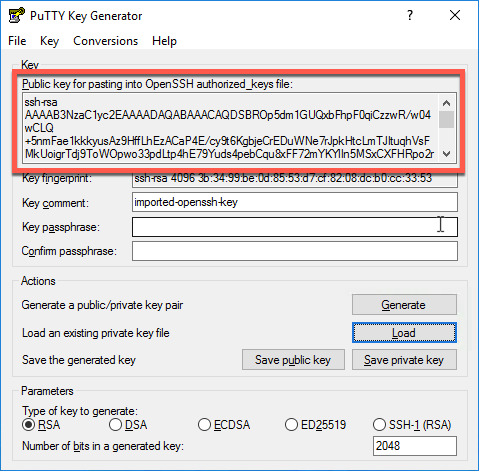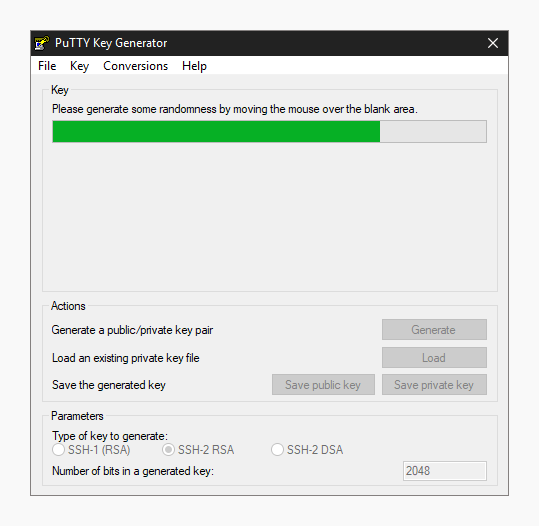

- #Putty ssh with key generator
- #Putty ssh with key windows 10
- #Putty ssh with key plus
- #Putty ssh with key free
- #Putty ssh with key windows
You will need to copy your public key from Step 4 above to the host you wish to use your keys with. Under “Private Key file for authentication” choose the private key you just saved. To use your new key with PuTTY, you need open “Connection” and “Auth” in the PuTTY configuration. Your keys are generated and you can close the PuTTY key generator. Choose a location to save the key and give your key a name (e.g. Generally you want to save this without a passphrase, so click “Yes” in the next dialog box. Click the “conversions” menu at the top and select “Export OpenSSH Key”. You can copy and paste it directly to your authorized_keys file or copy and paste this key into a notepad document for safe keeping to copy later. PuTTY does not save the public key for you. You need the public key written at the top of the window for your authorized_keys file (see “Copying your public key to a host” below). Move your mouse cursor over the gray area to fill the green bar.
#Putty ssh with key generator
In the PuTTY Generator window, make sure that “RSA” is selected at the bottom of the window and click “Generate”.
#Putty ssh with key windows
Once PuTTY is installed, press the Windows key or open the Windows and type “puttygen” and open the “PuTTYgen” app. It can be obtained from the PuTTY latest release page.

You can change keys used in the “session properties”.įor usage of your new keys with a remote host, see “Copying your public key to a host” below. SecureCRT will try to use this key filename by default in future sessions. For adding keys, see “Copying your public key to a host” below. The wizard will ask you if you want to add keys to a host.

Take note of the filename of your new key as well as its paired public key (the same name with a “.pub” extension) and where they are saved. Save your new key using “OpenSSH Key format (legacy)”. Generally you do not want to add a passphrase. Click next and then select key type of RSA and click Next. This will open the Key Generation Wizard. In the Public Key Properties window, click Create Identify File in the lower left. Under Authentication highlight PublicKey, then click the Properties button. Open a quick connect window (Under “File” or Alt-Q).
#Putty ssh with key free
SecureCRT can be downloaded free of charge by Purdue students, faculty, and staff from the Purdue Community Hub. They are both saved in plain text.įor usage of your new keys with a remote host, see “Copying your public key to a host” below. The identification is saved in the id_rsa file and the public key is labeled id_rsa.pub. You can now navigate to the hidden “.ssh” directory in your home folder. These fingerprints are not needed in day-to-day use of your keys but can be saved to your notes to identify your keys later if needed. The system will now generate the key pair and display the key fingerprint and a randomart image. Unless you are an expert you should use the default option and press Enter. In the command prompt, use the ssh-keygen command:īy default, the system will save the keys to /.ssh/id_rsa. Under “Best Match”, click “Command Prompt”. Press the Windows key or open up the Start Menu.
#Putty ssh with key plus
If not, click the plus sign next to “Add a feature”, select OpenSSH Client, and click “Install”. Scroll down the list to see if “OpenSSH Client” is listed. In the “Apps & Features” heading, click “Optional Features”.
#Putty ssh with key windows 10
Open the Windows 10 Start menu and search for “Apps & Features”. Generating SSH keys with OpenSSH (Windows 10 and newer) Follow the instructions below for the SSH client you use.


 0 kommentar(er)
0 kommentar(er)
